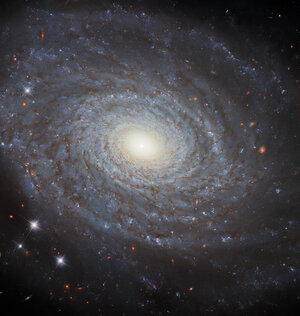Accept all cookies Accept only essential cookies See our Cookie Notice

About ESA
The European Space Agency (ESA) is Europe’s gateway to space. Its mission is to shape the development of Europe’s space capability and ensure that investment in space continues to deliver benefits to the citizens of Europe and the world.
Highlights
ESA - United space in Europe
This is ESA ESA facts Member States & Cooperating States Funding Director General Top management For Member State Delegations European vision European Space Policy ESA & EU Space Councils Responsibility & Sustainability Annual Report Calendar of meetings Corporate newsEstablishments & sites
ESA Headquarters ESA ESTEC ESA ESOC ESA ESRIN ESA EAC ESA ESAC Europe's Spaceport ESA ESEC ESA ECSAT Brussels Office Washington OfficeWorking with ESA
Business with ESA ESA Commercialisation Gateway Law at ESA Careers Cyber resilience at ESA IT at ESA Newsroom Partnerships Merchandising Licence Education Open Space Innovation Platform Integrity and Reporting Administrative Tribunal Health and SafetyMore about ESA
History ESA Historical Archives Exhibitions Publications Art & Culture ESA Merchandise Kids Diversity ESA Brand Centre ESA ChampionsLatest
Space in Member States
Find out more about space activities in our 23 Member States, and understand how ESA works together with their national agencies, institutions and organisations.
Science & Exploration
Exploring our Solar System and unlocking the secrets of the Universe
Go to topicAstronauts
Missions
Juice Euclid Webb Solar Orbiter BepiColombo Gaia ExoMars Cheops Exoplanet missions More missionsActivities
International Space Station Orion service module Gateway Concordia Caves & Pangaea BenefitsLatest
Space Safety
Protecting life and infrastructure on Earth and in orbit
Go to topicAsteroids
Asteroids and Planetary Defence Asteroid danger explained Flyeye telescope: asteroid detection Hera mission: asteroid deflection Near-Earth Object Coordination CentreSpace junk
About space debris Space debris by the numbers Space Environment Report In space refuelling, refurbishing and removingSafety from space
Clean Space ecodesign Zero Debris Technologies Space for Earth Supporting Sustainable DevelopmentLatest
Applications
Using space to benefit citizens and meet future challenges on Earth
Go to topicObserving the Earth
Observing the Earth Future EO Copernicus Meteorology Space for our climate Satellite missionsCommercialisation
ESA Commercialisation Gateway Open Space Innovation Platform Business Incubation ESA Space SolutionsLatest
Enabling & Support
Making space accessible and developing the technologies for the future
Go to topicBuilding missions
Space Engineering and Technology Test centre Laboratories Concurrent Design Facility Preparing for the future Shaping the Future Discovery and Preparation Advanced Concepts TeamSpace transportation
Space Transportation Ariane Vega Space Rider Future space transportation Boost! Europe's Spaceport Launches from Europe's Spaceport from 2012Latest

Four filter fusion
Thank you for liking
You have already liked this page, you can only like it once!
This stellar whirlpool is a spiral galaxy named NCG 7329, which has been imaged by Hubble’s Wide Field Camera 3 (WFC3). Creating a colourful image such as this one using a telescope such as Hubble is not as straightforward as pointing and clicking a camera. Commercial cameras will typically try to collect as much light of all visible wavelengths as they can, in order to create the most vibrant images possible. In contrast, raw images collected by Hubble are always monochromatic, because astronomers typically want to capture very specific ranges of wavelengths of light at any time, in order to do the best, most accurate science possible. In order to control which wavelengths of light will be collected, Hubble’s cameras are equipped with a wide variety of filters, which only allow certain wavelengths of light to reach the cameras’ CCDs (a CCD is a camera’s light sensor — phone cameras also have CCDs!).
How are the colourful Hubble images possible given that the raw Hubble images are monochromatic? This is accomplished by combining multiple different observations of the same object, obtained using different filters. This image, for example, was processed from Hubble observations made using four different filters, each of which spans a different region of the light spectrum, from the ultraviolet to optical and infrared. Specialised image processors and artists can make informed judgements about which optical colours best correspond to each filter used. They can then colour the images taken using that filter accordingly. Finally, the images taken with different filters are stacked together, and voila! The colourful image of a distant galaxy is complete, with colours as representative of reality as possible.
-
CREDIT
ESA/Hubble & NASA, A. Riess et al.; CC BY 4.0 -
LICENCE
CC BY 4.0 INT or ESA Standard Licence
(content can be used under either licence)

The eponymous NGC 691

Colourful clouds of a nearby neighbour

Eye of the galaxy

Colouring what human eyes can’t see















 Germany
Germany
 Austria
Austria
 Belgium
Belgium
 Denmark
Denmark
 Spain
Spain
 Estonia
Estonia
 Finland
Finland
 France
France
 Greece
Greece
 Hungary
Hungary
 Ireland
Ireland
 Italy
Italy
 Luxembourg
Luxembourg
 Norway
Norway
 The Netherlands
The Netherlands
 Poland
Poland
 Portugal
Portugal
 Czechia
Czechia
 Romania
Romania
 United Kingdom
United Kingdom
 Slovenia
Slovenia
 Sweden
Sweden
 Switzerland
Switzerland

























